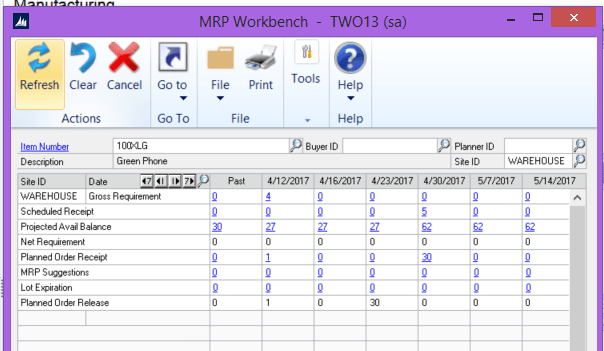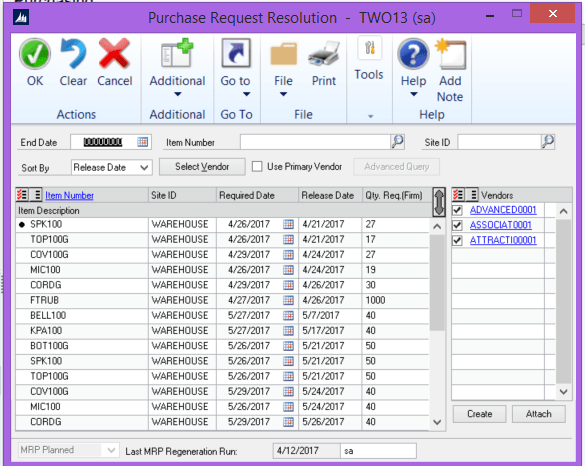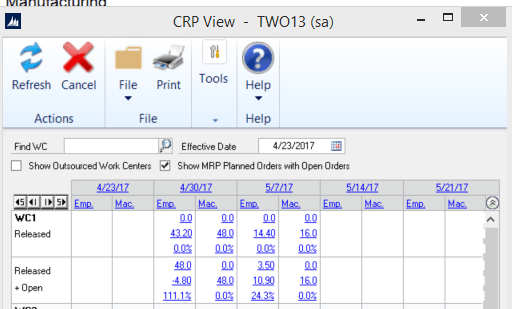What’s the problem? Using this method, critical information is left out of the ERP system, thereby making it difficult to share (and impossible to automate). Customer service has to call someone in Production to answer customers’ questions regarding delivery dates, and purchasing has to be managed manually.
With Microsoft Dynamics GP, there are some easy steps that you can take so that the system can provide more visibility for planning and procurement. Since you’re already recording production – issuing components, receiving MOs – the data entry doesn’t add unnecessary work. It’s a matter of timing, creating manufacturing orders (MOs) in MS Dynamics GP as part of the planning instead of when you are ready to release the MO (or after the fact to record production).
- Enter in a sales forecast – or even sales quotes – so that MRP can see the demand. MRP can then suggest POs or MOs to meet that demand. These documents are easily deleted/modified so that you can see the impact of different scenarios.
- Enter in planned production as open (MOs). You can do this manually, or use Master Production Scheduling to create MOs from a sales forecast. Open MO’s are tentative demand, so can be distinguished from released MO’s that are ready to be put into production, but they create demand for their components in MRP.
Because MOs drive demand in MRP, you may be able to lower the safety stock quantities of many raw material items without jeopardizing your ability to produce.

Maintaining appropriate lead times for specific items will make it easier to proactively place POs as MRP will suggest filling shortages based on required dates and lead times.
MRP will create PO requests which can then be edited to create POs, reducing manual data entry.

Open/planned MOs are visible in the Capacity Requirement Planning (CRP) module. MS Dynamics GP calculates work center loads based on the queue, move, and cycle times from the routings.

As an example, for the week of 4/30/17, there are only 4.8 hours of production scheduled of the 48 hours available in work center 1. When I include the planned production, however, that work center is actually overloaded.
Because the times are standardized, the information may not be perfect, but it can at least flag areas of concern.
Take advantage of the capabilities of MS Dynamics GP. It takes some time and practice to be able to understand how the data is used and presented, but the payoff is having more useful and reliable information to help with planning and procurement – and to (over time) reduce the manual effort required to manage production.
